I stood at the immigration queue at Hong Kong’s airport in Chek Lap Kok, trying hard to comprehend that a few miles away lay one of the most densely populated places on Earth. Open spaces have been so degraded that they have become a scarce resource, and the real estate market value to house the dead has got more expensive than the living. If you’re already disappointed, you’re bound to be more disappointed given the fact that in Hong Kong more people live or work above the fourteenth floor than anywhere else on Earth. But fret not, this bustling metropolis is also home to a diverse population of people and cultures that has developed a global mindset that is a key attribute of the city’s transformation to Asia’s World City.
To really get a sense of this melting pot, you’ll have to know a little history. Hong Kong translates to “spice harbor” or “fragrant harbor,” whose shores on the South China Sea was once a busy trading port that sold incense sticks to as far as the Arabian Peninsula. Hong Kong was under the British rule during the 1840s, and in 1898 the United Kingdom signed a 100-year lease agreement with China to obtain sovereignty over Hong Kong and its surrounding territories. The lease agreement expired in 1997 and Hong Kong was handed back to China under “one country, two systems” principle that allows Hong Kong to retain its autonomy and freedoms, including an independent justice system, for another 50 years – set to expire in 2047.
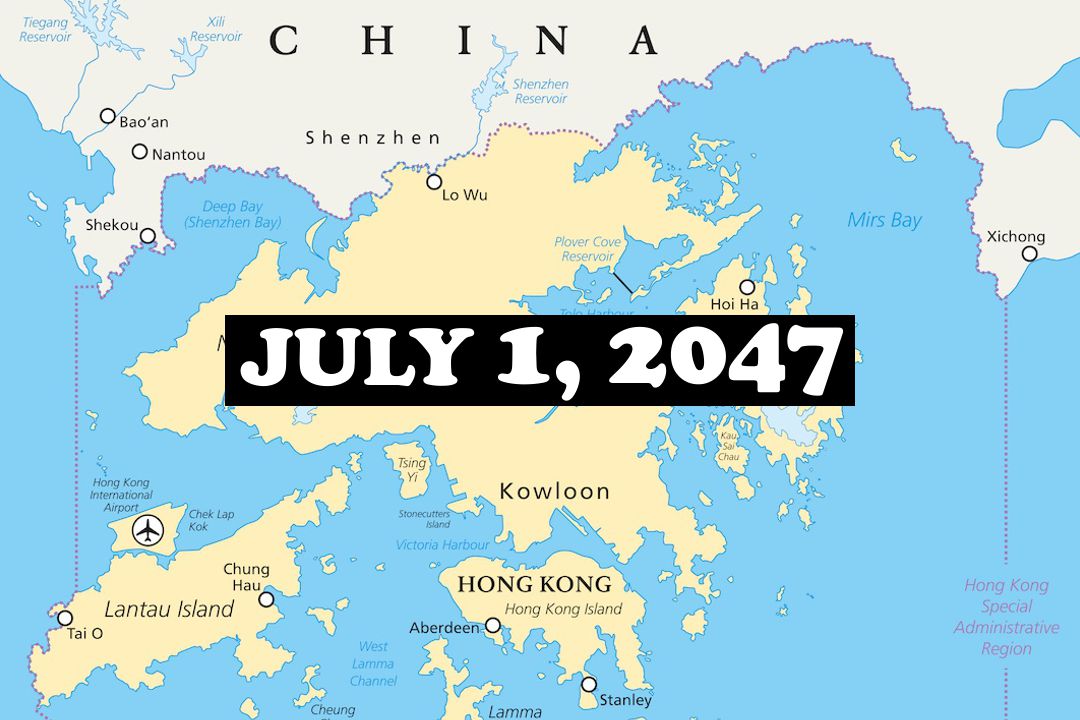
Hong Kong and China’s “one country, two systems” formula would remain until 2047
For those of you that don’t know, this blog post inherits its title from the 1973 martial arts action film, “Enter the Dragon” produced and starred by Hong Kong action star Bruce Lee. It was also his first major American movie as well as the last movie fully completed prior his sudden and untimely death in Kowloon on 20 July 1973 at age of 32, a month before the premier of the movie.
Arriving into a new country is one thing and getting into the city is another. Being a light traveler allowed me the liberty and flexibility that I could have not avoided with heavy luggage. I collected my pre-booked 4G Traveler SIM Card and the Octopus Card from the airport and got on the bus to Kwun Tong Road, Kowloon Bay, Hong Kong’s second most populated district after Sha Tin. An hour’s drive and I got off at the bus stop outside Kowloon Bay MTR station where I met Alex, my Couchsurfing host for the next three days. I felt blessed and excited for been able to base in Kowloon, instead of the more popular mainland (wanting to experience the local culture). It was also home to hundreds of street markets and neighborhood eateries, also had a lot of congestion, but more character. I had two full-days to do it all—history, cuisine, art, and to walk or run as much as possible. Alex showed me a couple of nearby hawker food stalls and convenience stores, before leading me to his twentieth-floor apartment at a nearby building. He handed me an access key to his apartment, showed me the apartment’s kitchenette, living room, a common bathroom and the guest room where I called it a night.

Left: A last-minute selfie with Alex / Right: View of my bunk-bed at Alex’s apartment
My day began at 7.30am – I whirled towards the tiny window by the bed and peeked through the opening to scan the surrounding views. A cluster of tall buildings dominated every inch of the surrounding land and sky, their gleaming glass-and-steel exteriors reflected the golden sun, and the hoots and whistles of the hustle and bustle of the life beneath. Hong Kong is home to about 7.4 million people that live on 1,105 sq km of land (two main land masses) – that’s an average of 6,780 people living on every square kilometer.
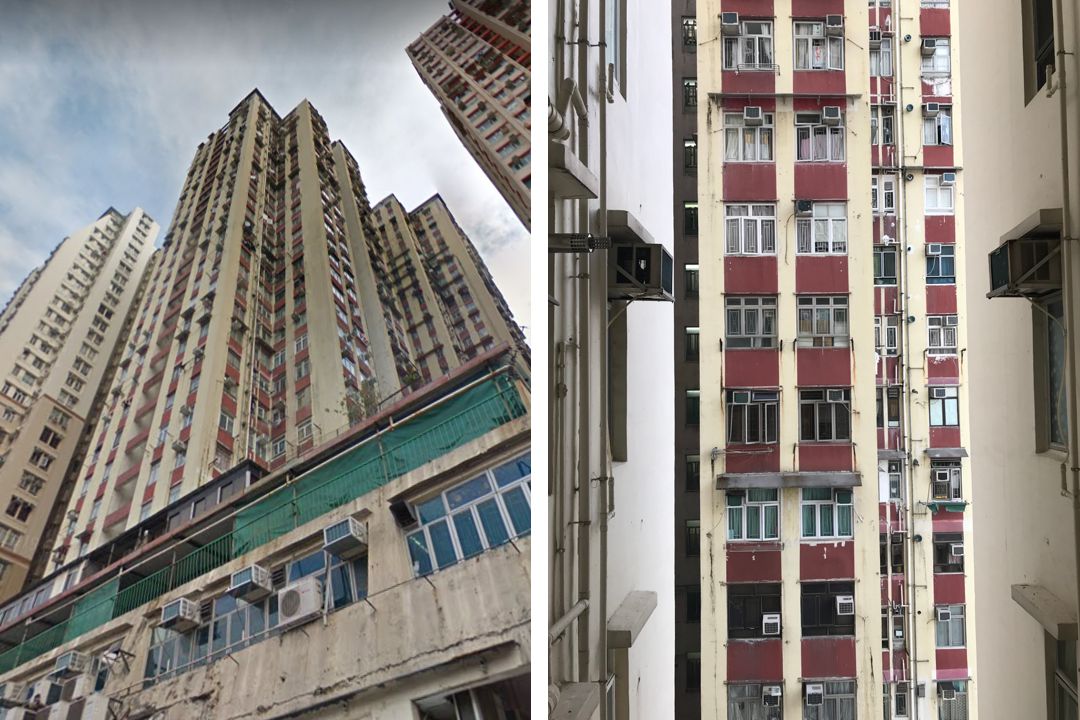
Left: Exterior view of Alex’s apartment building / Right: View from the bedroom window
I headed to the MTR station and took off to explore the city. My first stop was at the Sik Sik Yuen Wong Tai Sin Temple, an area of 193,750 square feet (18,000 square meters) and is built in traditional Chinese architectural design using red pillars, a two-tiered golden roof adorned with blue friezes, and carvings of multicolored mythical creatures. The busy religious center mainly caters the Taoist, Buddhist, and Confucian worshipers of the Hong Kong society. From pensioners and businessmen to parents and young working professionals come to pray for good fortune through offerings, divine guidance and fortune telling. The temple’s natural setting and beautifully ornamented buildings make it as much a scenic attraction as well as an important religious center.
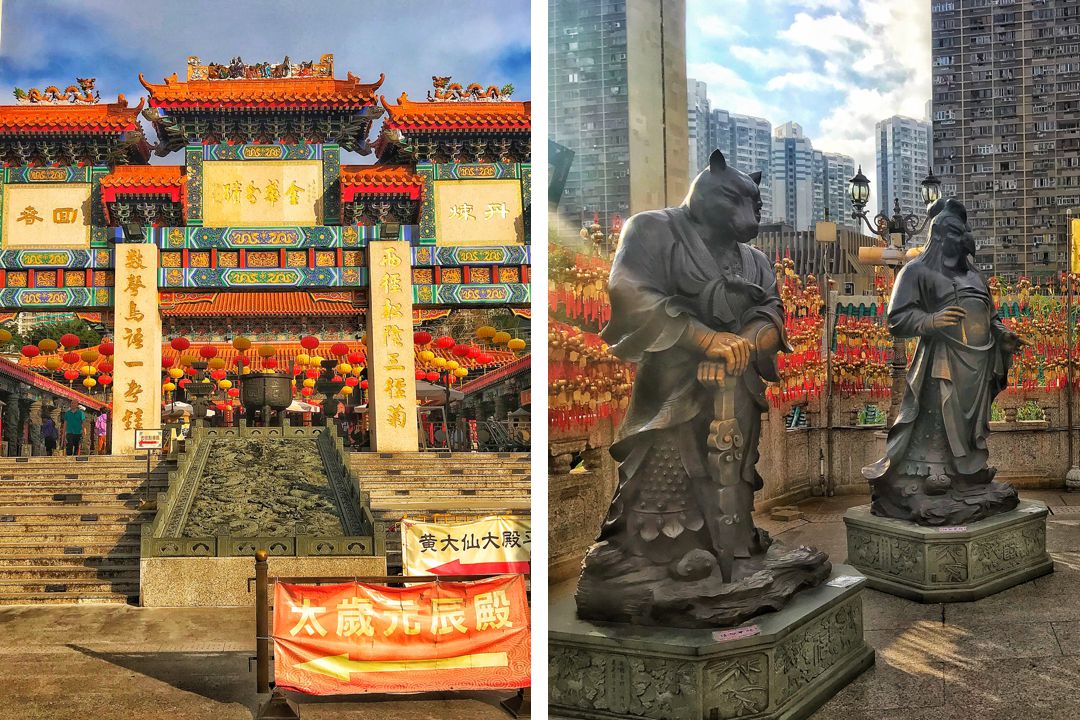
The temple’s popularity stems from the fact that it is said to grant wishes upon demand
It’s no secret that Tim Ho Wan is among Hong Kong’s favorite spots to grab the first meal of the day. For those of you who haven’t heard of, these self-labelled “dim sum specialists” are world-renowned as the cheapest Michelin-starred restaurant chain. They are widely known for their baked BBQ pork buns and costs as as low as US$3. I wanted to try the glutinous rice dumpling “lor mei gai”, a sticky rice dish which comes with large pieces of tender-moist chicken pieces along with shiitake mushrooms wrapped in a fragrant lotus leaf.
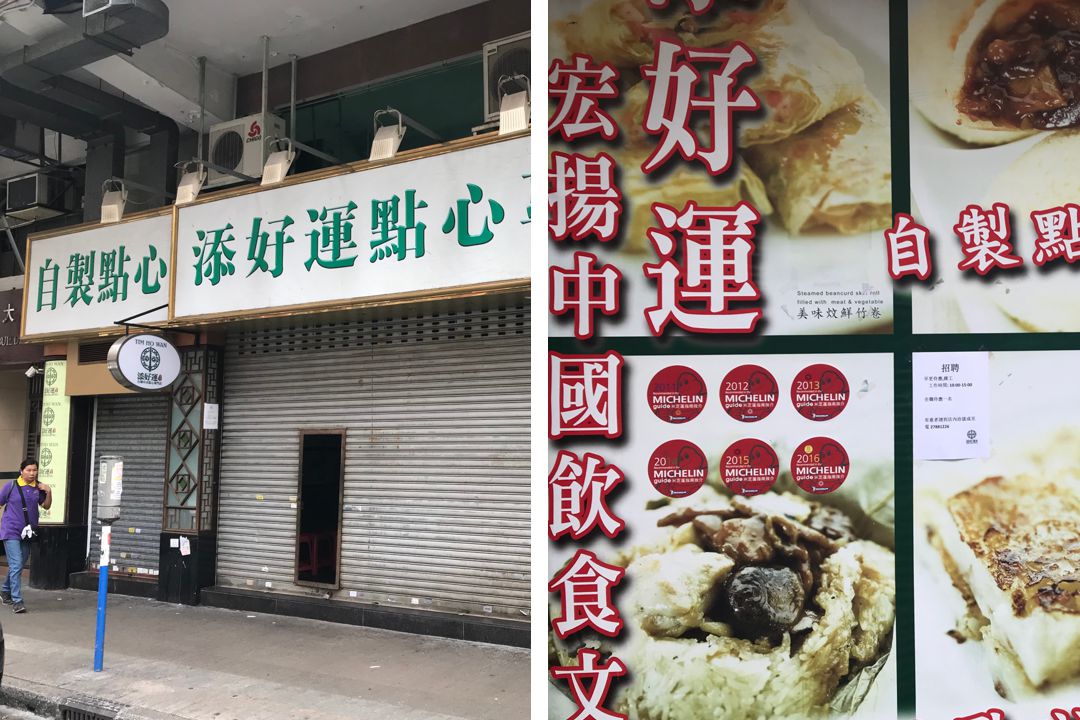
Somehow they were closed – not my lucky day!
Despite not having breakfast as planned, I decided to try the pineapple bun at Kam Wah Café, one of Hong Kong’s favorite on-the-go bites. Although the name can be deceiving, there is no actual pineapple in the recipe. It’s a soft, fluffy bun topped with a sweet, crunchy crust, and are available at many Chinese bakeries all across Hong Kong. Many prefer eating the pastry with a slab of melted butter sandwiched in the middle, a pairing known as bo lo yau. The government of Hong Kong listed the palm-sized bun among its list of 480 intangible cultural heritages in June of 2014.
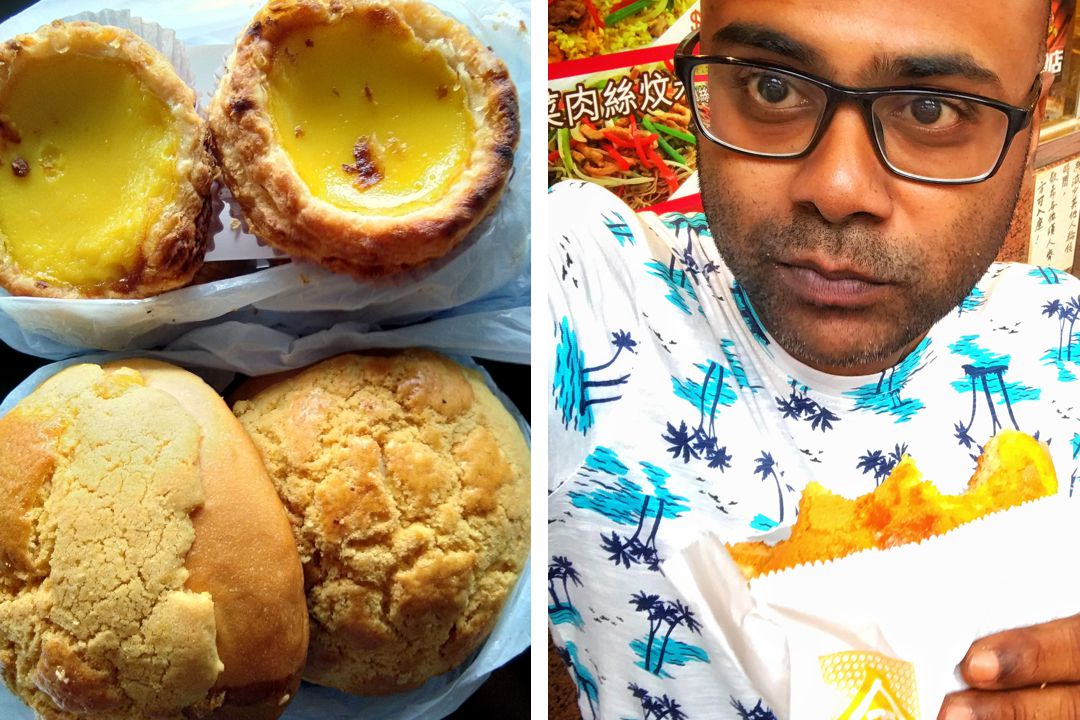
Pineapple buns are a common snack during breakfast or afternoon tea
A tantalizing treat for my taste-buds and I took off to immerse myself in the chaotic, crowded smorgasbord of sights and sounds at the Ladies Market situated in the Mong Kok district. As its name implies, it is also Hong Kong’s most famous street market, a one-kilometer stretch of stalls serving an astoundingly wide variety of bargain clothing and accessories for women of all ages. There is also a great line in bargains for wrist watches, chess sets, cosmetics, bags, home furnishings, chess sets, chopsticks and other Chinese themed gifts.
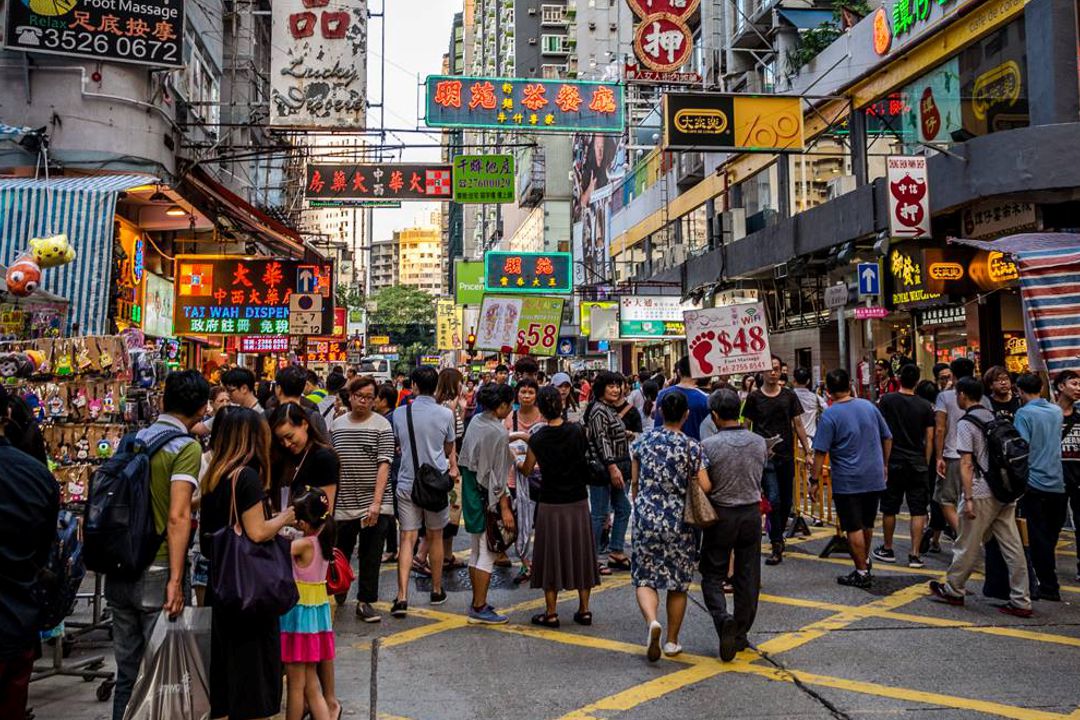
Hong Kong’s most popular trading-stall market
Standing amidst in the busy and prime location of Nathan Road in Tsim Sha Tsui was the Chungking Mansions. From outside, the building appears as an entirely solid concrete mass – 15 identical residential floors on top of a rain magnified neon-lit, two-storey mall. The massive building complex is widely seen as a testament of the benefits of globalization and the multiracial, multicultural face of modern Hong Kong, as well as an integral component of the Chinese city’s identity. The complex came to life in the 1960s as an upmarket residential estate, and over time transformed into a haven for backpackers, foreign traders and asylum seekers. It is estimated that over 10,000 people enter or exit the complex every day.
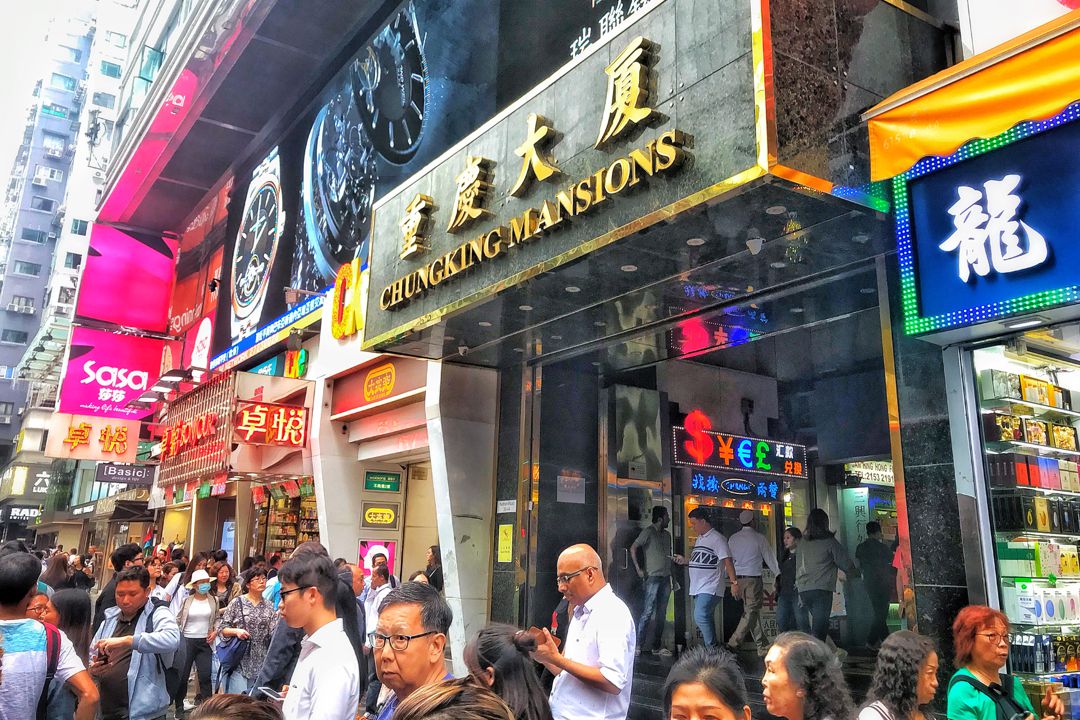
The beating pulse of Hong Kong’s last ‘ghetto’
Built in the 1960s, the Monster Building in Quarry Bay is a cluster of five inter-connected mammoth-sized buildings. The massive structure offers a glimpse into the lives of its vast population. Its an ethereal sight from the building’s courtyard to gaze at the individual units that are stacked one on top of the other, creating a vibrant tapestry of homes. The location has also been used in numerous films, including Ghost in the Shell and Transformers.
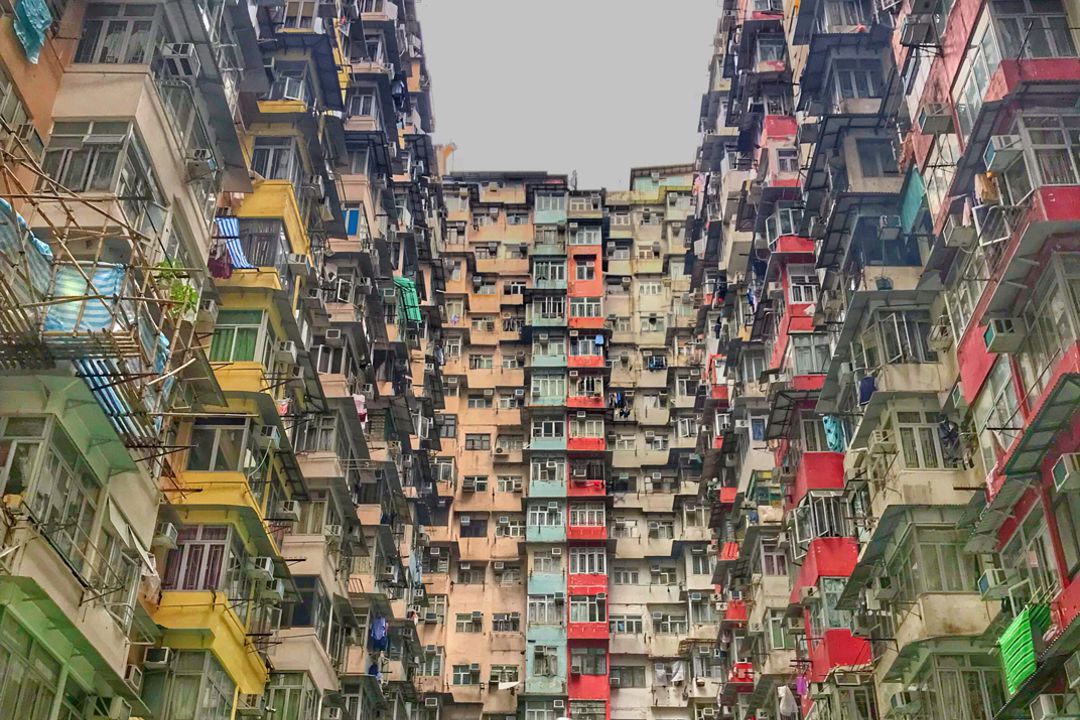
Monster Building in Quarry Bay
Buzzing with fashionable locals and trendy tourists seeking to dance away into the night is Hong Kong’s legendary nightlife district, Lan Kwai Fong (LKF). A cobble-stoned maze that houses over 90 restaurants, bars and nightclubs in the Central Business District of Hong Kong. The area is also well known for hosting and celebrating major festivals, such as Halloween, Christmas and New Year. The area was packed with people from the surrounding offices, eager to shake off the working day. The atmosphere ranged from exceptional food and wine pairings to perfectly match each course.
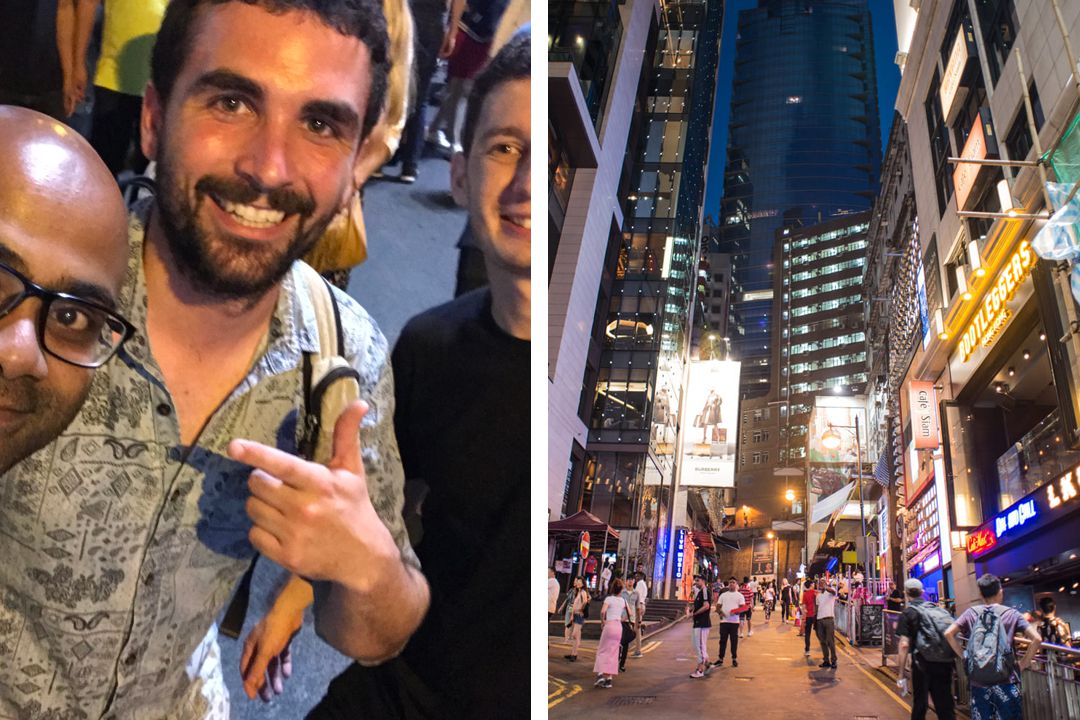
I slipped on a jeans and a creased shirt and ventured into the night to take in the much heard about nightlife.
The next morning began with a hectic hunt to get the bus ticket to cross the Hong Kong–Zhuhai–Macau Bridge, the world’s longest sea-crossing structure that was inaugurated only 27 days ago. It was quite a challenge with the little available information on the Internet about the agents selling bus tickets for route, until a Chinese colleague shed me some light. Finally, a good two-and-a-half hours spent searching for the agent’s office and I am all set to depart to Macau the next morning. This was the single most time consuming task that ate most of the morning over an itinerary I’ve planned for months in advance, and my mistake was assuming it would be easy to get the bus ticket to Macau. On to my next BIG mistake: I took off to the Tung Chung Town Centre to ride the Ngong Ping 360 Cable car, to see the 5.7 kilometer spectacular views of Ngong Village on Lantau Village and the surrounding seascape of the South China Sea. Only after getting down at the MTR, I discovered there was a mile long queue of people waiting for their turn. I felt extremely frustrated as I literally lost half my day with two mistakes I’ve made, especially when I had to leave Hong Kong the next morning. Sipping a cup of coffee over a staircase outside a 7-11 store I decided to join a Couchsurfing hangout to fix the rest of my day.
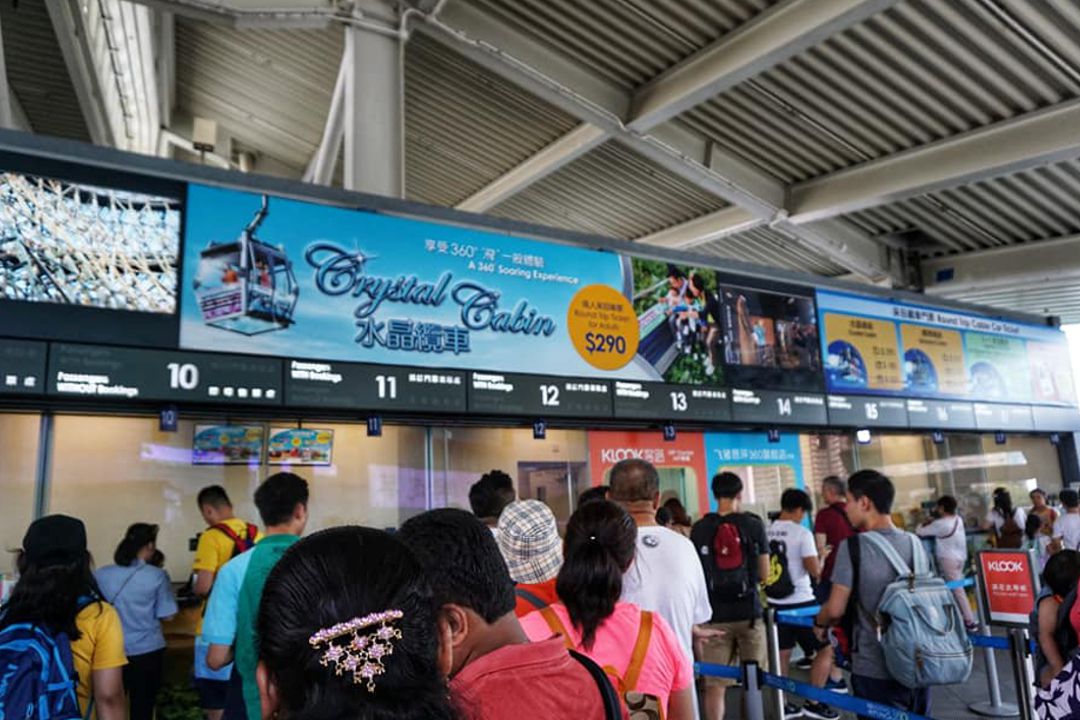
Hordes of people lined the length of a mile waiting to buy tickets for the Ngong Ping 360 cable car
We met up for lunch and headed to Tsim Sha Tsui Promenade to take in the scenic views of the Victoria Harbor, a naturally sheltered channel between the Hong Kong Island and Kowloon Peninsula. It is also referred as the Pearl of the Oriental, and attracts flocks of visitors to cruise the harbor and watch the evening light show as well as the Hong Kong skyline. Been the largest harbor in China and the third largest in the world, it is also gifted with a natural barrier in the shape of a semicircle around the north shore of Hong Kong Island so that high waves are blocked out. We continued our evening on a star ferry boat ride across the harbor to the Kowloon Peninsula for dinner before everyone parted.
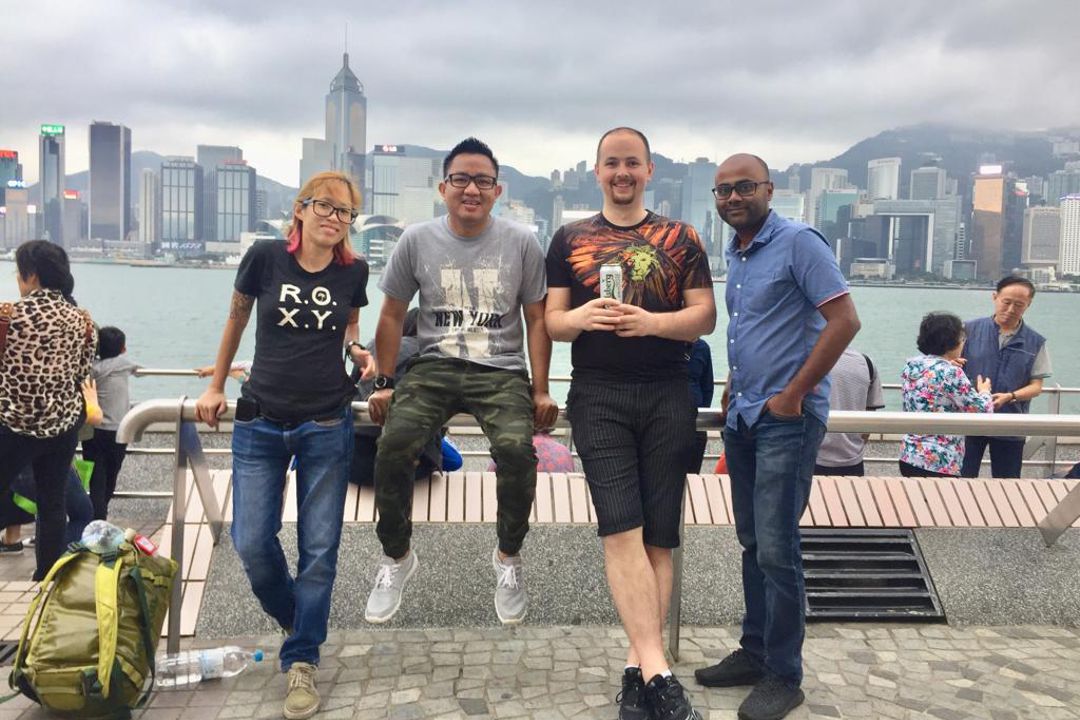
The Hong Kong Couchsurfing Squad
Alex invited me to stay with him during my next trip which I warmly accepted. I think Hong Kong could easily cause decision fatigue: the sheer amount of indulgences – from foot massages to horse races to sparkling views of the Victoria Harbor – can disorient even the most seasoned traveler. Equally dramatic is the contrast between the peninsula’s famous skyline and the surrounding territories covered by lush peaks, parkland and hundreds of beaches and hiking trails to explore. It doesn’t help that this bustling metropolis also claims rolling mountains, a vast wetland park, plus a number of quaint outlying islands that feel like proper time capsules. Even in the global economic sphere, this bustling metropolis has risen to the third spot in the Global Financial Centers Index (GFCI 25) after New York and London, endorsing its position to the top in Asia.
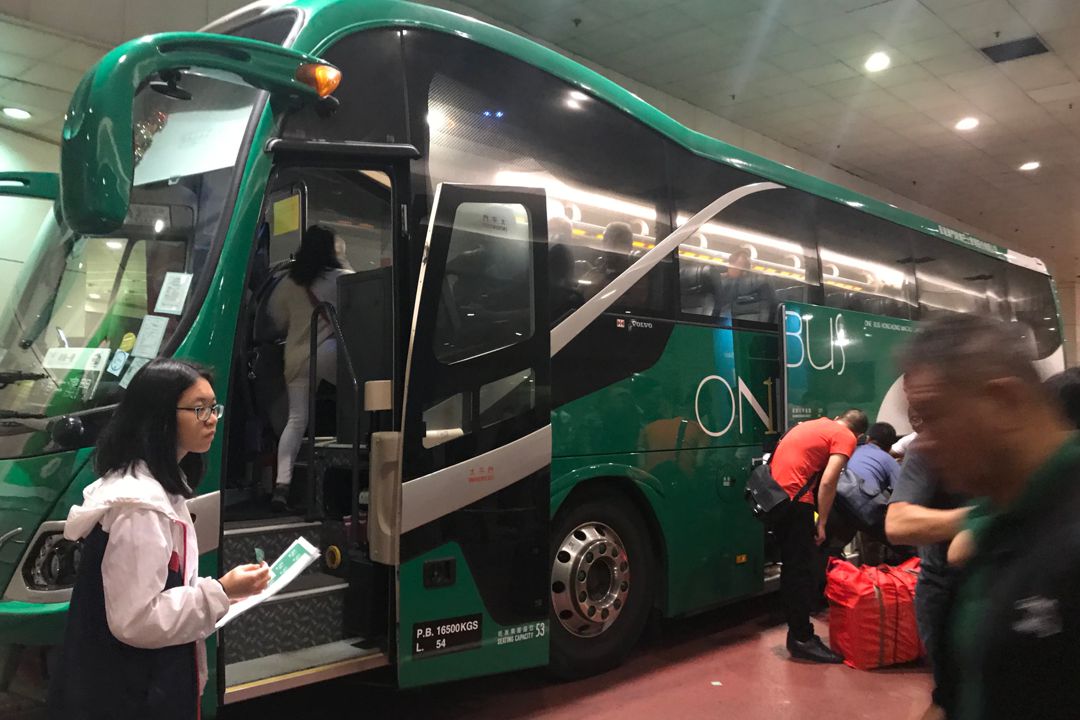
My trip to Hong Kong was short, but unforgettable – I left with such great memories and even better friends

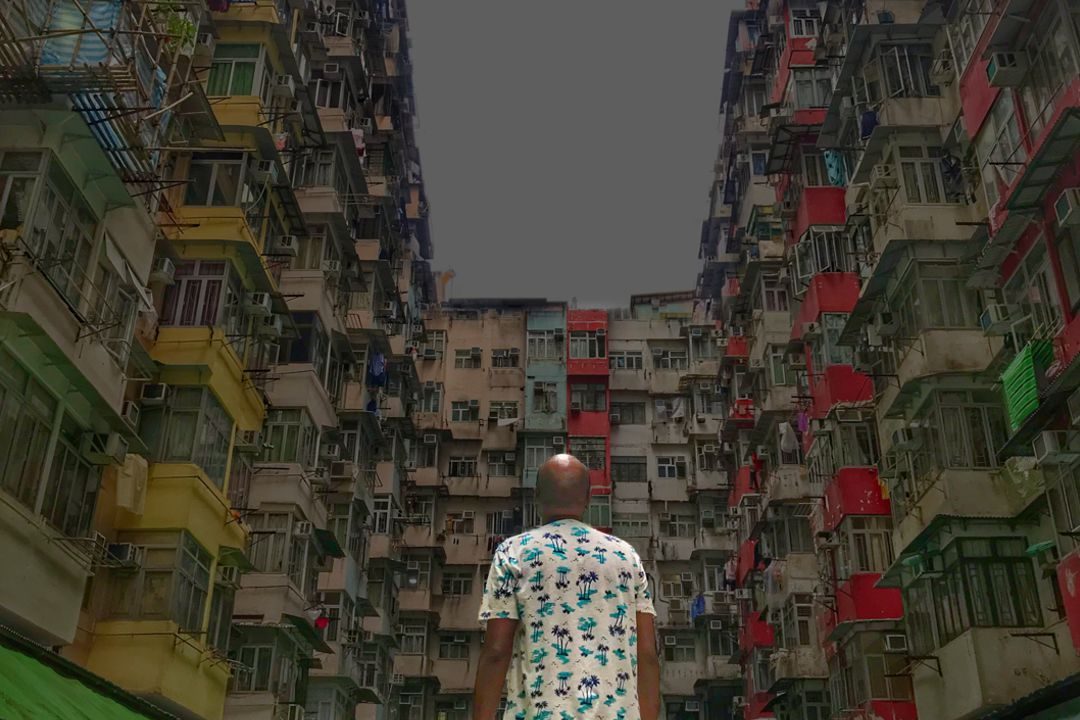
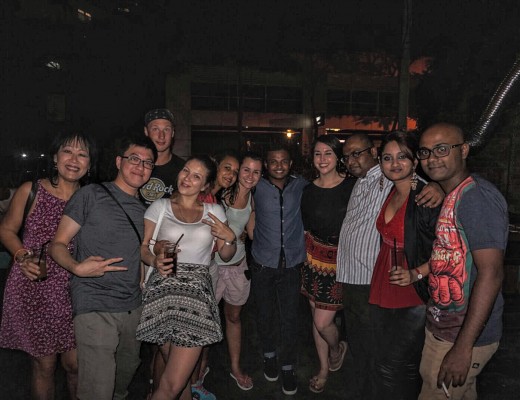
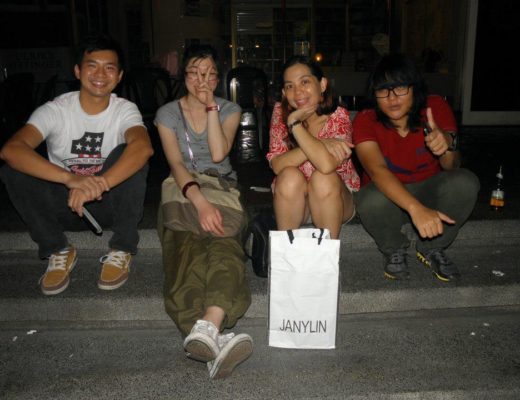
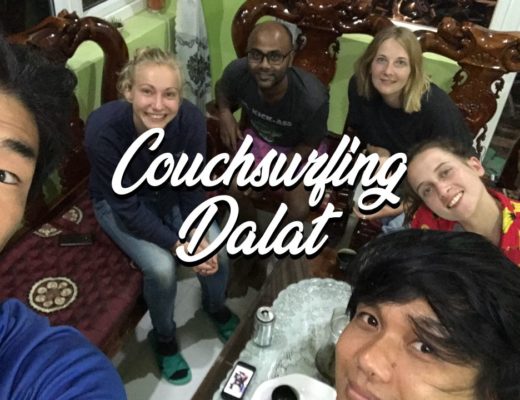
No Comments